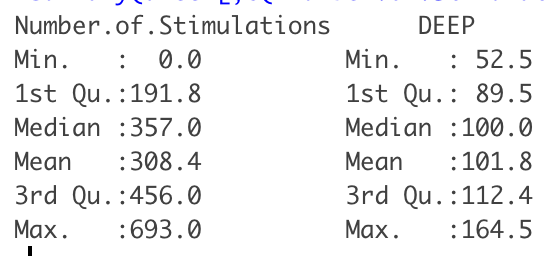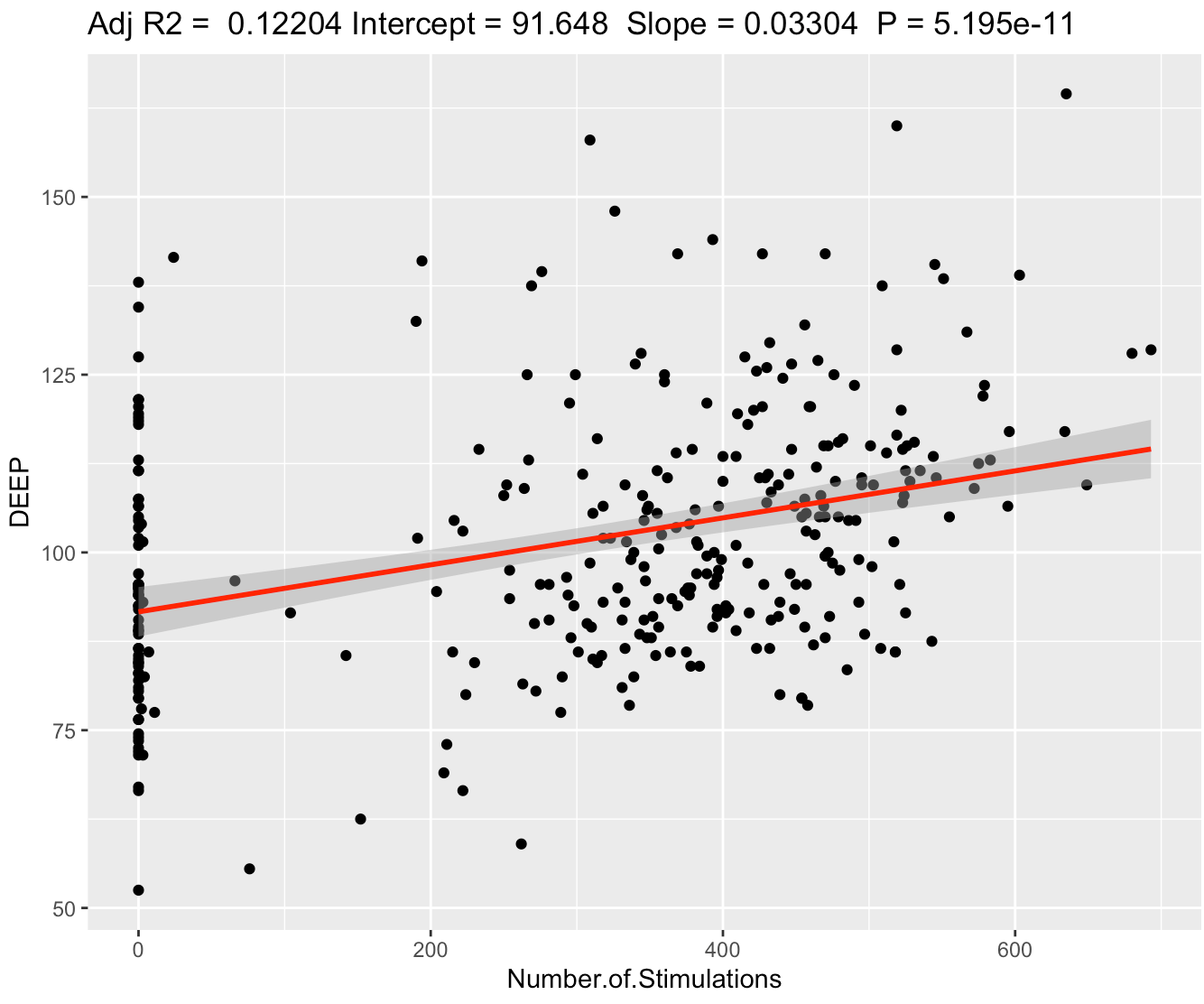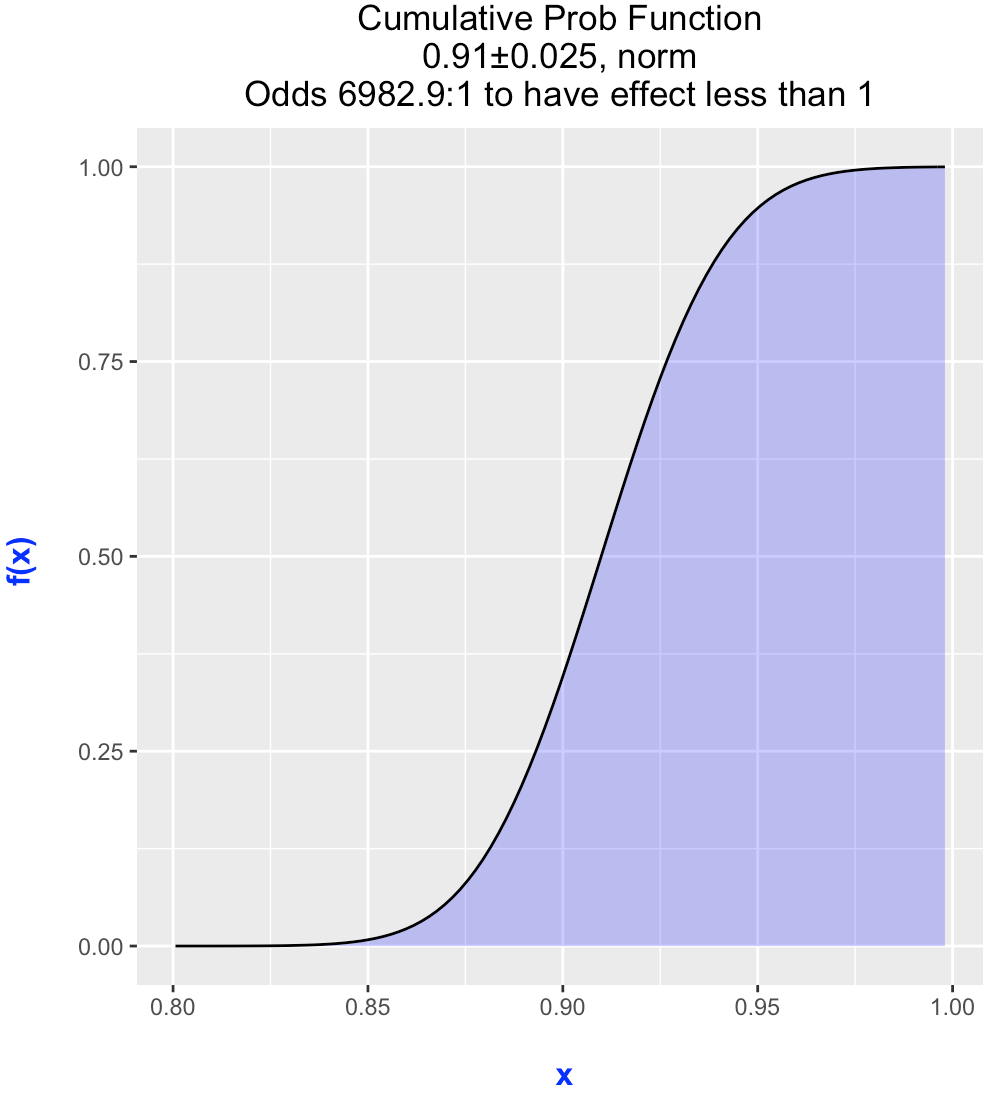Article was updated at 30 Dec 2022 with additional 181 nights of data. Results doesnt changed too much, confirming previous results.
Abstract
What did i do?
I've measured pink noise stimulations count and DEEP sleep length to find out if stimulations prolong DEEP sleep.
How did i do it?
I've slept 326 nights with Dreem 2 headband and did a statistical analysis
What did i learn?
On average, pink noise stimulations increase my DEEP sleep by ~12.7 minutes per night. Additional ~1h30m of DEEP sleep per week seems to be a significant effect.
Introduction
There is a some scientific evidence that pink noise can increase deep sleep quality (delta power) and quantity. But that's not happends, when pink noise not synced with accurately detected deep sleep stage (by EEG). Dreem 2 EEG Headband have this feature.
The purpose of this self experiment (n=1) is to find out if pink noise stimulations can increase amount of DEEP sleep.
Since Dreem doesnt provide me a access to raw EEG signal (all my requests were refused) delta power is not analyzed (but they claim power increase it by 11.79%, p-value = 3.52e-5).
Materials & Methods
Participants
1 adult male anthropometrics was described in previous article
Experimental design
During 333 nights (from 2020-08-27 to 2022-12-30) amount of pink noise stimulations and DEEP sleep length was assessed by Dreem 2 EEG Headband which was validated[1] against gold standard PSG. In a stimulus study, accuracy was also checked and shows strong correlations to PSG and spectrogram agreement. There were 66 nights without stimulations at all and 260 nights with stimulations. 6 nights were exclude due battery run out in the middle of night and 1 night were excluded because of doubled metrics due to unknown reason. Amount of stimulations were different for each day and determined by Dreem 2 internal algorithms.
Subjective sleep quality, mood, depression, anxiety, stress, fatigue and sleepiness was assessed by a popular in scientific research questionnaires described in previous experiment
Results
The data summary shown below

DEEP in minutes
Linear regression
| effect | p-value | effect size | |
| DEEP, minutes | 0.033 | 5.2e-11* | weak |
We can see a slope of 0.033 minutes increase in DEEP sleep stage for each additional 1 stimulation with weak effect size. Even with weak effect size, average of 386 stimulations per night extended DEEP sleep for additional 12.7 minutes. 95% Confidence for slope is very narrow [0.0327,0.0333].
DEEP, minutes

Let's compare differences between 2 groups with stimulations and without. First of all we should check for data normality, since i have less than 5000 data points i have used Shapiro-Wilk test which returned p-val = 2.540559e-15 which means data is non-normally distributed.
In case of non-normal distribution i'm going to use non-parametric bootstrap to compute confidence intervals. Result is 95% Confidence Interval [-14.099913; -4.904528] which mean group without stimulations have lower DEEP sleep time, somewhere between -14 to -5 minutes per night which can be represented as rates [0.851,0.948] where base is sum of DEEP sleep minutes. We can plot probability density graph using normal distribution function to assess likelihood of "stimulations improve deep sleep time" hypothesis:

We have odds of 6982 to 1 that stimulations have non zero effect of increasing our deep sleep. So we are pretty sure that stimulations have effect. Lets look at cumulative probability function:

From that graph we can estimate our confidence in effect of stimulations. For example, we have 75% (y=0.75) confidence that nights without stimulations have 7.5% (at x = 0.925 we get 100*(1-0.925) = 7.5%) less DEEP. If you are more conservative then you may feel confident with probability of 90% effect being is 5% (x=0.95). I feel good with 75% chance hypothesis "nights without stimulations have less 7.5% deep sleep" being true.
Discussion
The main result of this experiment is a significant association between pink noise stumulations and DEEP sleep time.
Dreem 2 seem to be able to increase DEEP sleep time for an additional 12.7 minutes per night or 88 minutes per week.
Likelihood of this to be true seems to be in acceptable range.
In conclusion, when i'm planning to sleep with Dreem 2 i'll make Stimulations feature ON.
Amount of DEEP sleep decreases during aging and using this feature may slow down this process.
Limitations:
- These results are NOT generalizable
- Absence of blinding, randomization, observational nature, n=1
- Often correlation ≠ causation
- Questionnaires widely used in research are prone to participant bias.
- There is a lot of factors affecting sleep (diet, exercise, caffeine etc) which not taken into account
Data availability & Information
Welcome for questions, suggestions and critics in comments below.
Dreem 2 device unmodified data is fully available here and format is explained by manufacturer.
Data for questionaires will be presented soon.
R Code and output is available on Github.
Statistical analysis
RStudio v2022.7.2.576, R v4.1.2
Effect sizes based on adjusted R2, Cohen's 1988 rules